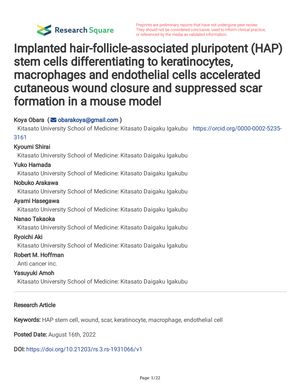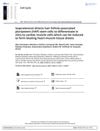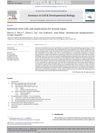Implanted Hair-Follicle-Associated Pluripotent Stem Cells Aid Wound Healing and Reduce Scarring in Mice
August 2022
in “
Research Square (Research Square)
”
hair-follicle-associated pluripotent stem cells HAP stem cells keratinocytes macrophages endothelial cells cutaneous wound healing scar formation capillary vessel formation macrophage infiltration fibrocyte infiltration collagen deposition dermis TGF-β1 COL1A2 COL3A1 dermal inflammation fibrosis wound healing scar-free healing collagen

TLDR Implanted special stem cells from hair follicles helped heal wounds faster and with less scarring in mice.
In a study aimed at improving cutaneous wound healing and reducing scar formation, Hair-follicle-associated pluripotent (HAP) stem cells were cultured into sheets and implanted into dorsal wounds of a mouse model. These HAP stem cells differentiated into keratinocytes, macrophages, and endothelial cells. The results showed that the implanted HAP stem cells not only accelerated wound closure but also increased capillary vessel formation while suppressing macrophage and fibrocyte infiltration and collagen deposition in the dermis. Additionally, the levels of mRNA for TGF-β1, COL1A2, and COL3A1, which are associated with dermal inflammation and fibrosis, were decreased in the HAP-stem-cell-implanted mice compared to the control group. These findings suggest that HAP stem cell implantation has the potential for clinical application in achieving scar-free wound healing.




